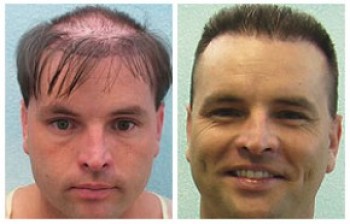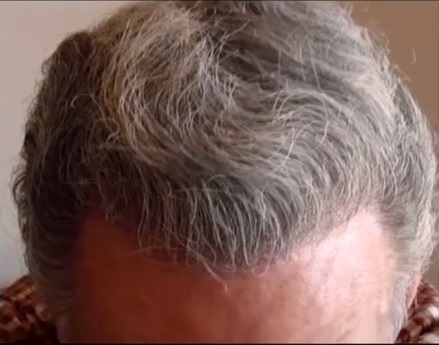
Before the use of body hair transplant for treating baldness, the NW 7’s had no reprieve; minoxidil and finasteride would prove ineffective, applying Toppik would be embarrassingly futile, hats can only be worn so much, and hair transplant clinics called you a “poor candidate.” Without an adequate donor supply, hair restoration was impossible.
The use of body hair follicles in transplant surgeries is changing lives. This groundbreaking technology means:
- You don’t need to have hair on your scalp to get hair on your scalp
- The severely bald are no longer poor candidates
- NW 7’s are restorable
- The severely bald due to an accident, burn, or prior botched surgeries are repairable
With the right surgeon, body hair transplant results in a full head of hair and a restored quality of life. So how did this technology come to be and how do you know if it’s right for you?

Advent of Body Hair Transplant to Head Surgeries
This hair restoration resource, also known as BHT, or body hair to head transplant, is an extension of advanced follicular unit extraction (FUE). FUE is a microsurgical technique that uses no scalpels or knives and requires no wound sutures. Instead, it uses tiny punching tools and needle devices to harvest the donor hair follicular unit by follicular unit. This avoids the excision of the traditional mid-rear strip of flesh and, consequently, any linear scarring.

Body hair transplant procedures were around the bend… Due to the nature of this technique to branch outside the linear strip and use other hair, in combination with its ability to succeed with nominal donor and recipient scarring, it was only a matter of time before hair loss specialists began making use of non-head donor hair sources. Once they did, and recognized that non-head donor grafts could yield acceptable long-term survival rates, the pool of donor hair became plentiful for most patients. If you had hair on your:
- Face
- Shoulders
- Chest
- Stomach
- Arms
- Legs


The words “poor candidate” were a distant whisper of the past. Today’s body hair transplant results have redefined the requirements for successful hair restoration.

One of the most promising areas for treating severe hair loss is the use of beard hair since these follicles are relatively abundant. If you are interested in learning more about how facial hair can be used in hair restoration surgeries, click here to read more

